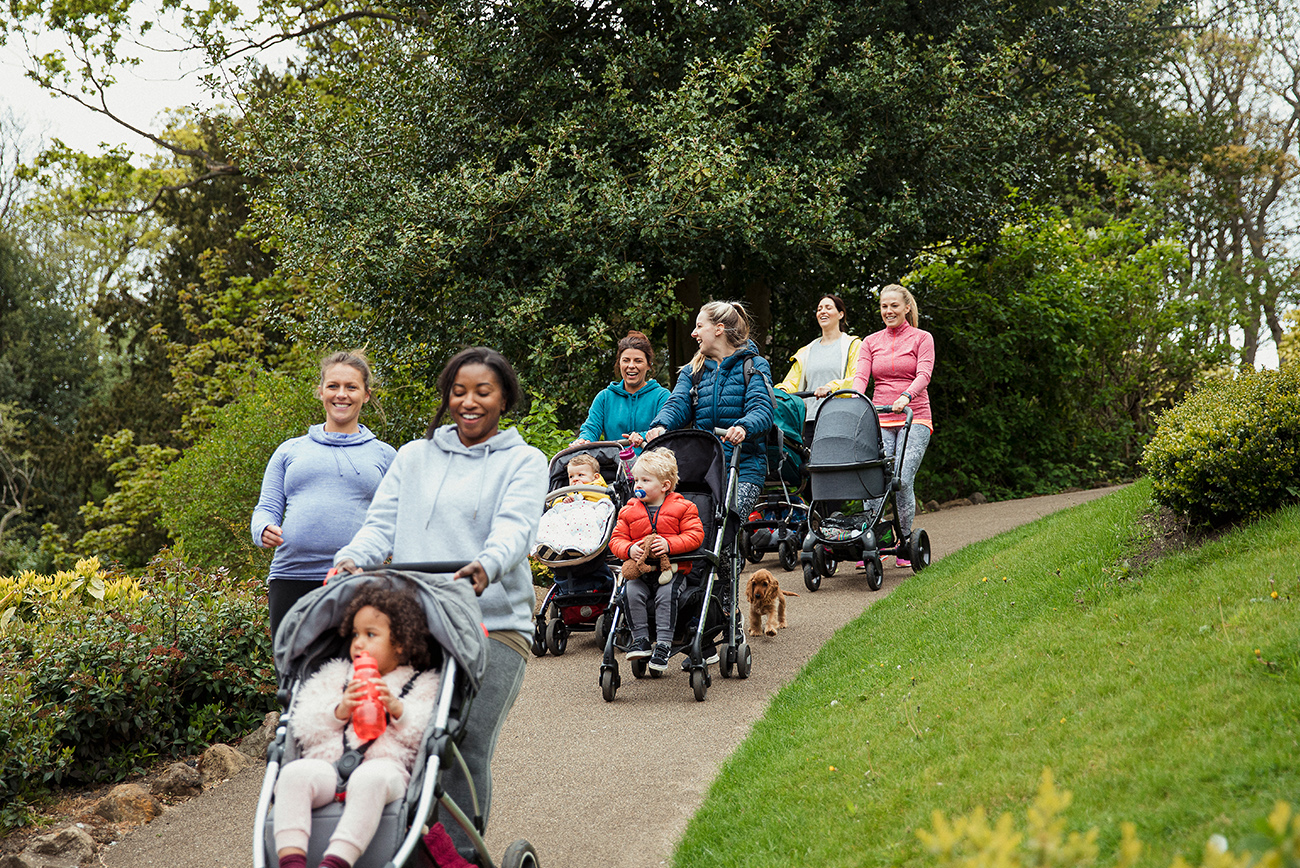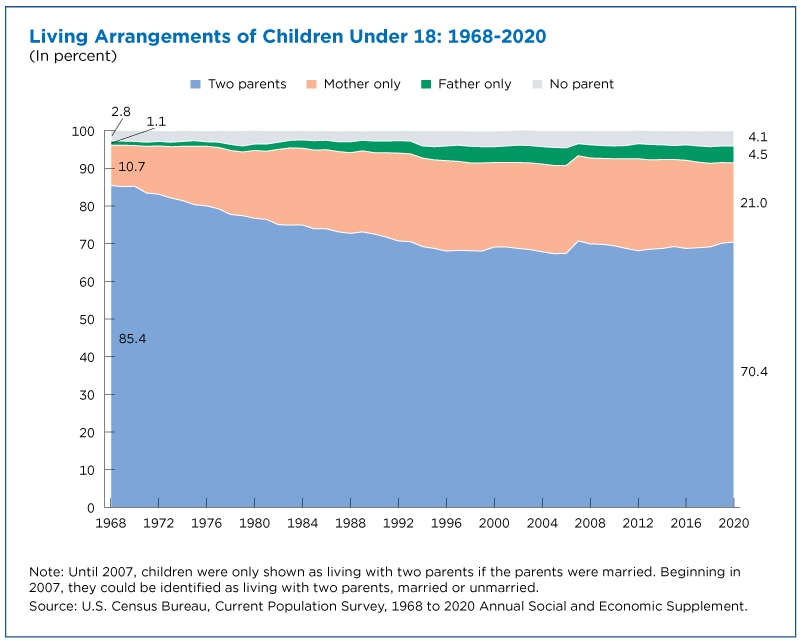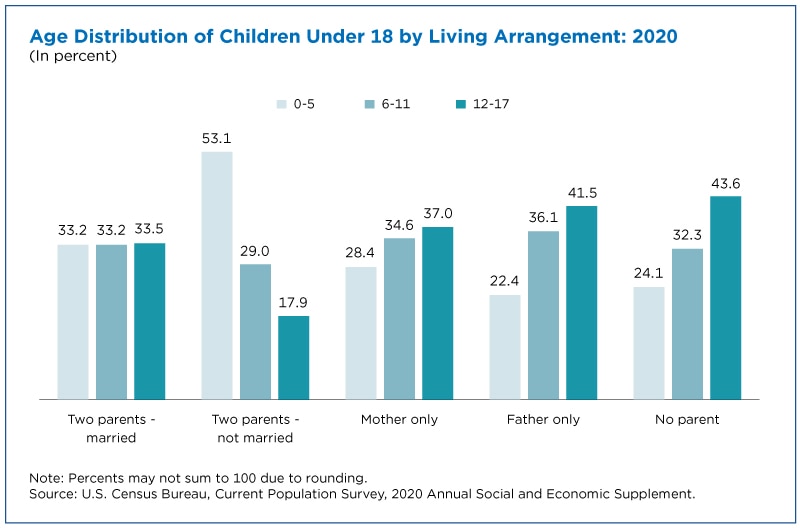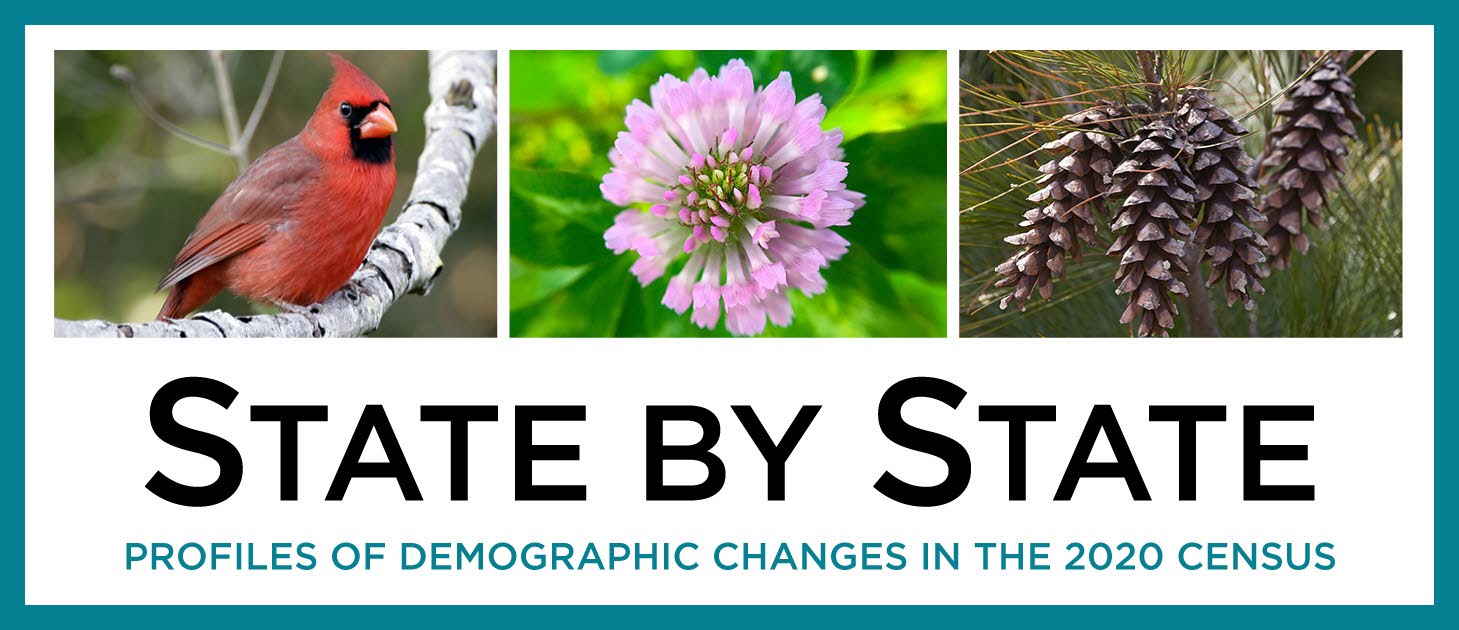Percentage and Number of Children Living With Two Parents Has Dropped Since 1968
The number of children living with two parents has dropped since 1968, while the percentage living with their mother only has doubled.
In 1968, 85% of children under 18 lived with two parents (regardless of marital status); by 2020, 70% did, according to the Census Bureau’s Current Population Survey (CPS).
Children living with a mother only is the second most common U.S. living arrangement, a number that has doubled since 1968.
Monitoring these trends is important because children’s living arrangements can have implications for children’s outcomes, such as academic achievements, internalizing problems (e.g., depression and anxiety), and externalizing problems (e.g., anger and aggression).
Since 2007, the CPS has specifically asked respondents to identify two parents for the child if both live in the household.
If one parent is deployed overseas at the time of interview, for example, children are shown as living with one parent. The same goes for separated or divorced parents sharing custody: The parent the child is living with during the interview would be the identified parent.
Prior to 2007, respondents could report the presence of one parent only and children were only shown as living with two parents when the parent was married. If the parent was not married, children were not identified as living with two parents.
Living With Two Parents
Living with two parents has historically been the nation’s most common children’s living arrangement. In 1968, about 60.0 million (85%) U.S. children under 18 lived with two parents. But this number dipped between 1968 and 2020 when both the percentage and overall number of children living with two parents declined.
By 2020, although this living arrangement continued to be the most common for children, the number of children living with two parents had slipped to 51.3 million (70%).
Living With Mother Only
Children living with a mother only is the second most common U.S. living arrangement, a number that has doubled since 1968.
About 7.6 million (11%) children lived with their mother only in 1968 compared to 15.3 million (21%) in 2020.
Living With Father Only
The number of children living with their father only, although still small, more than quadrupled from 0.8 million (1%) to 3.3 million (4.5%) between 1968 and 2020. This arrangement remains much less common than living with a mother only.
Living With No Parent
Perhaps unsurprisingly, living with no parent but with grandparents or other relatives, for example, is the least common living arrangement for children.
In 1968, approximately 2.0 million (3%) children lived with no parent. In 2020, that estimate rose to approximately 3.0 million (4%).
Among those living without a parent, more than half (55%) had a grandparent in the household.
Age of Children
The age profile of children living in specific living arrangements varies.
For example, the share of children ages 0 to 5, 6 to 11, and 12 to 17 living with two married parents did not differ significantly in 2020.
However, more than half of children living with two unmarried parents were between the ages of 0 and 5. Children living with one parent or no parent were older, more often ages 12 to 17 than 0 to 5 years.
Differences Among Race and Origin Groups
Living with two married parents was the most common living arrangement for children of all race and origin groups other than Black children.
Fewer than two-fifths of Black children were living with two married parents in 2020. These children were most likely to live with their mothers only, with nearly half living in this arrangement in 2020.
Asian children were the most likely to live with two married parents, followed by White, non-Hispanic children and Hispanic children.
Other highlights:
- Hispanic children were the most likely (6%) to live with two unmarried parents. The percentage of White, non-Hispanic (3.1%) and Black (3.4%) children living with two unmarried parents did not differ statistically.
- Asian children were the least likely to live with two unmarried parents (roughly 2%).
- Hispanic children were half as likely as Black children to live with their mothers only, with almost a fourth living with their mother only. About 13% of White, non-Hispanic children and about 8% of Asian children lived with their mothers only.
- The percentage (5%) of White, non-Hispanic children living with their father only did not differ statistically from that of Black children. About 4% of Hispanic children lived with their father only. Asian children were less likely to live with their father only (about 2%) compared to children in the other race or Hispanic origin groups.
- Living with no parent was most common for Black children (8%); followed by Hispanic (4%); White, non-Hispanic (3%); and Asian children (1%).
The America’s Families and Living Arrangements tables and figures also provide details about unmarried couples, family groups, household sizes and other living arrangements.
More information on confidentiality protection, sampling error, nonsampling error and definitions is available on the CPS technical documentation page.
Paul Hemez and Chanell Washington are survey statisticians in the Census Bureau’s Fertility and Family Statistics Branch.
Story Ideas and Statistics
Stats for Stories
Stats for Stories
Stats for Stories
Stats for Stories










